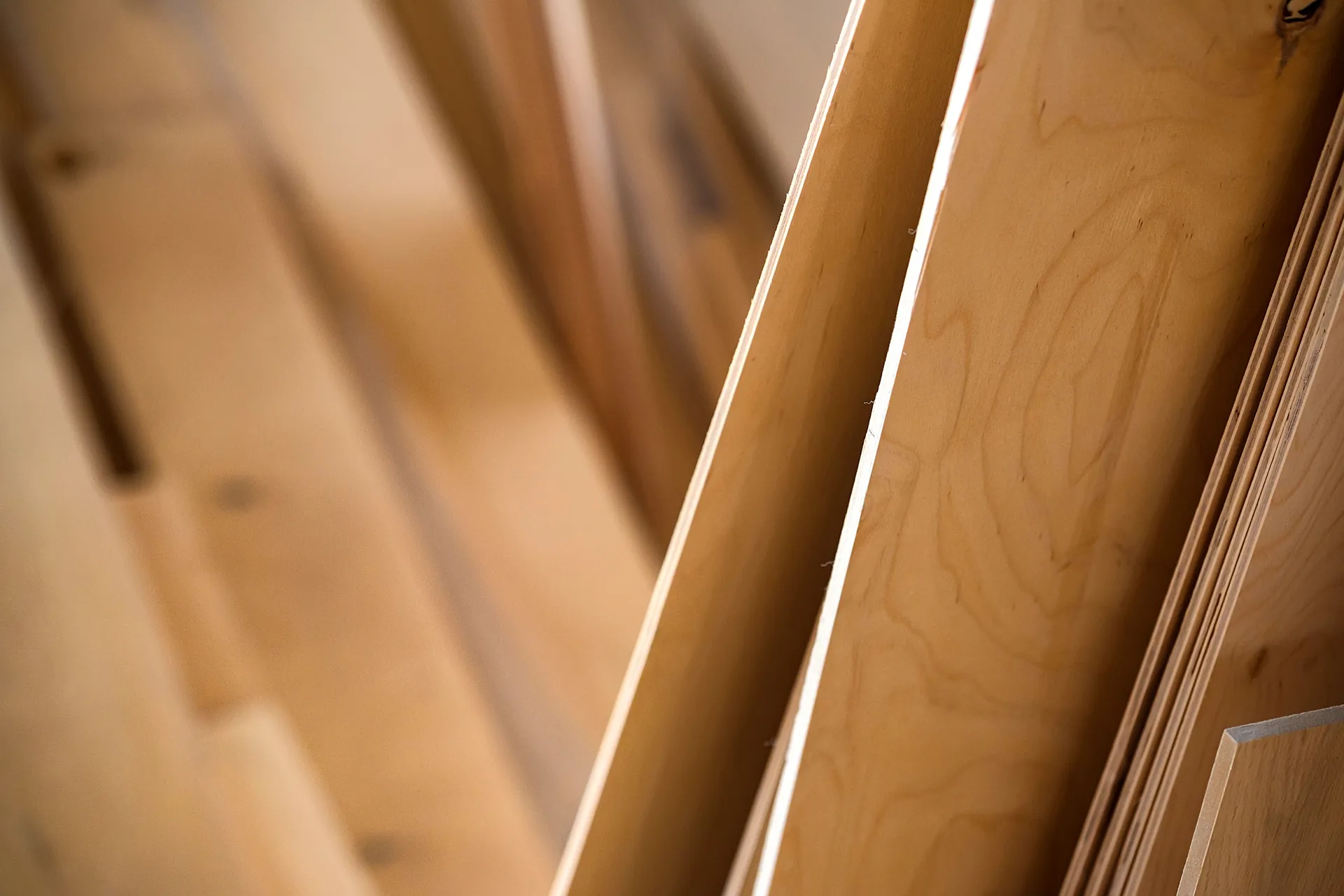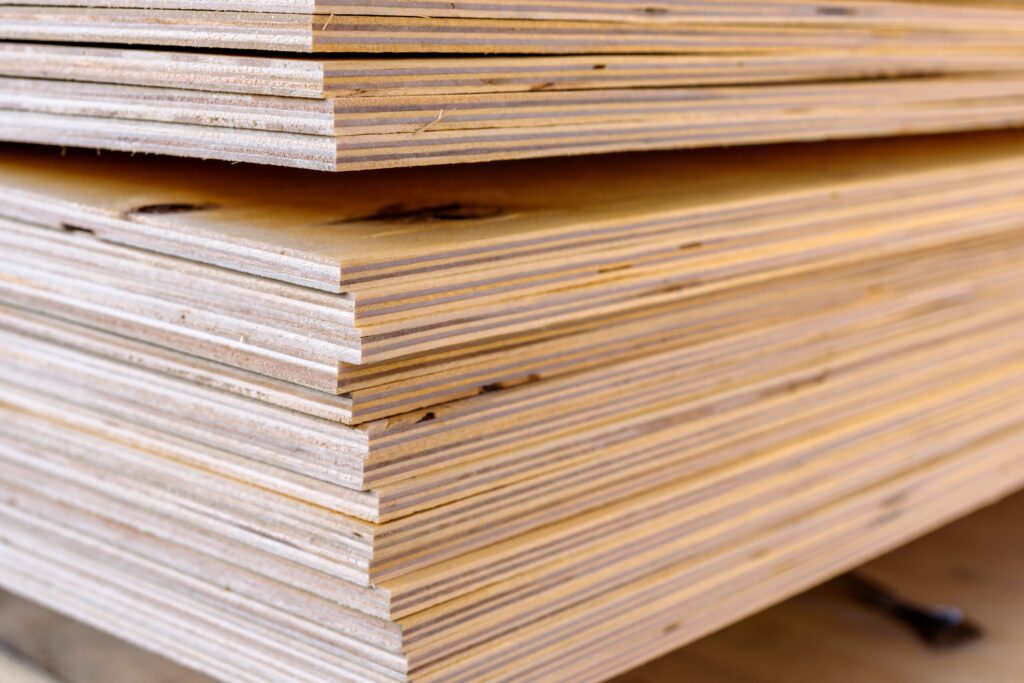
- by admin
Understanding the properties of F17 Plywood
Plywood is a versatile building material known for combining various layers of wood veneers. Among the different grades and types of plywood available, F17 plywood has emerged as a favourite among builders due to its unique properties. But what exactly makes F17 plywood stand out from the crowd?
The unique composition of F17 Plywood
F17 plywood, in essence, consists of multiple layers of timber veneers bonded together, where each layer is oriented in a different direction. This cross-layering technique provides exceptional strength and resistance to warping. The ‘F’ in F17 refers to the formaldehyde emission class, while ’17’ indicates its structural rating in terms of its strength, making it ideal for heavy-duty applications.
What sets F17 plywood apart from other grades is its inherent ability to resist deformation under load. The specially selected timber species used in its manufacture contribute to its overall durability. This unique composition enables it to carry significant weight and withstand the rigours of construction sites.
Why F17 Plywood is a preferred choice for builders
Builders often favour F17 plywood for various reasons. Firstly, its superior strength-to-weight ratio allows for easy handling and installation while still maintaining structural integrity. Unlike traditional solid lumber, F17 plywood offers greater resistance to bending and splitting, making it a safer choice for construction.
Additionally, F17 plywood is available in large sheets, which translates to fewer joints and seams in the finished structure. This can lead to increased aesthetic appeal and lower overall labour costs during the installation process.

The role of F17 Plywood in enhancing strength
When it comes to construction, having strong, reliable materials is crucial. F17 plywood plays a significant role in enhancing the structural strength of various projects.
The science behind F17 Plywood’s strength
The strength of F17 plywood is derived from its multiple layers and the adhesive used in its production. Unlike other types that may weaken at joints and seams, F17’s layered design distributes weight evenly across its surface. This means that even under extreme stress, such as heavy wind loads or seismic activity, F17 plywood retains its integrity far better than traditional materials. Find more about stress on https://www.health.harvard.edu/topics/stress
Moreover, the adhesive used in the bonding process is engineered to ensure a solid grip, providing additional stability. This technology not only enhances its load-bearing capacity but also makes it suitable for a variety of applications, from flooring to roof sheathing.
Practical applications of F17 Plywood in construction
F17 plywood is used in numerous applications across the construction industry. Its strength allows it to be an excellent choice for flooring systems, where it can support heavy furniture and foot traffic. Moreover, it is commonly used in scaffolding, which requires a material that can endure variable loads and resist deformation.
Additionally, architects and builders appreciate its versatility for a wide range of applications, including wall sheathing and roofing, as it can be readily adapted for different designs and specifications.
The durability factor of F17 Plywood
When discussing construction materials, durability cannot be overlooked. The longevity of a structure often hinges on the materials used in its construction. F17 plywood excels in this regard.
How F17 Plywood withstands harsh conditions
F17 plywood has been engineered to resist moisture, making it highly suitable for applications in damp or humid environments. Its resistance to rot and decay is a significant advantage, particularly in coastal regions where buildings are more susceptible to harsh weather conditions.
Furthermore, the moisture-resistant properties of F17 plywood mean that it is less likely to warp or swell over time, ensuring that structures maintain their intended shape and aesthetic appeal.
Longevity of F17 Plywood in construction projects
The longevity of F17 plywood not only benefits individual projects but can also lead to cost savings for builders and homeowners alike. By using a high-quality, durable material, the need for repairs and replacements diminishes considerably.
This translates to lower maintenance costs and less downtime for repairs, making F17 plywood a sound investment for any building project.
The environmental impact of using F17 Plywood
In today’s world, sustainability is more important than ever. The choice of materials used in construction has a significant impact on the environment. Here, F17 plywood shines as a responsible choice.
Sustainability considerations of F17 Plywood
F17 plywood is typically sourced from responsibly managed forests, ensuring that the timber used in its production is harvested sustainably. This not only supports eco-friendly practices but also promotes reforestation efforts, as many manufacturers are committed to planting new trees for every tree harvested.
Additionally, the manufacturing processes for F17 plywood have become increasingly environmentally friendly, utilising low-emission adhesives that adhere to stringent regulations regarding formaldehyde emissions. To learn more about formaldehyde click here.

How F17 Plywood contributes to green building
F17 plywood can play a vital role in green building projects, helping builders meet stringent sustainability certifications and requirements. Its longevity and durability mean that structures built with F17 plywood will require fewer resources for repairs and replacements over the years.
Moreover, the thermal efficiency of structures using F17 plywood as part of their composition can contribute to reduced energy consumption, making it a beneficial choice for environmentally-conscious builders and homeowners.
The cost-effectiveness of F17 Plywood
While the upfront cost of materials is always a consideration for builders, the long-term cost-effectiveness of F17 plywood cannot be underestimated.
Comparing the cost of F17 Plywood with other materials
When compared to other materials, such as concrete or steel, F17 plywood often comes out as a more affordable option. While the price of high-quality plywood might be higher than standard options, its strength and durability mean that it can perform on par with these heavier materials without the added costs associated with their installation and maintenance.
The long-term financial benefits of using F17 Plywood
Investing in F17 plywood can lead to significant cost savings over time. Its durability reduces the likelihood of costly repairs, while its ease of installation can lower labour costs. In addition, structures built with F17 plywood can maintain their aesthetics longer, thereby preserving property values.
In conclusion, F17 plywood is an exceptional choice for builders looking for strength, durability, and environmental responsibility. Whether for residential or commercial projects, it holds the potential to enhance the efficiency and longevity of construction work while remaining cost-effective in the long run.
Learn aboutplywood formwork on: The Versatility of Plywood Formwork in Modern Construction